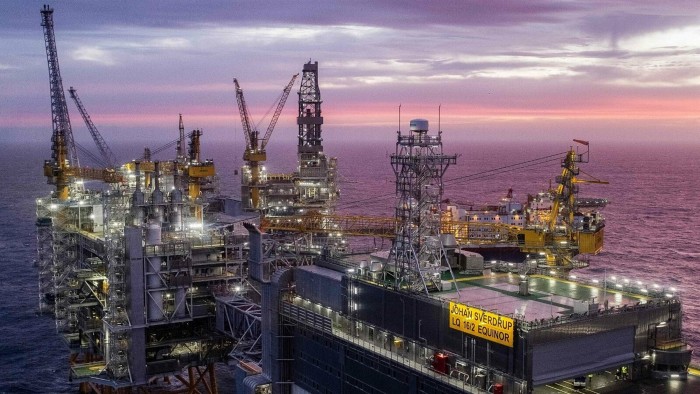It’s time for Europe to ask Norway to cut the price of gas


Roula Khalaf, Editor of the FT, selects her favourite stories in this weekly newsletter.
In the gas crisis there has been one bright spot. Norway — democratic, friendly, reliable Norway — has stepped up to help keep the lights on in Europe, maximising production even at the expense of its own oil output to try and replace every molecule it can of Russian supply.
But as the price of gas has continued to soar, more than doubling since Russia started openly choking exports in June, there are quiet rumblings in the industry. They suggest that it is time to ask Norway to do more, even something that might once have seemed unthinkable: Norway should agree to cut the price at which it sells its gas.
Before the howls of protest from Oslo and complaints from free-market purists, it is worth saying this is nowhere near a formal proposal. But that these views are even being aired privately by hardened oil and gas executives outside Norway suggests they are worth exploring.
The argument is as follows: Europe, whether it wants to admit it or not, is embroiled in an economic war as a result of Russia’s invasion of Ukraine.
The greatest threat to Europe’s support for Kyiv, well understood by Vladimir Putin, is that the energy crisis becomes an economic crisis and western voters turn inward. Gas prices are no longer just high but rapidly becoming economic weapons.
However nice the gas windfall Norway is reaping seems today — and at the equivalent of almost $400 a barrel of oil it is mind-bogglingly huge — it is not in the country’s strategic interests to see its neighbours fall into a deep recession or to have an emboldened Russia pushing up against the EU’s borders.
The hard numbers are enlightening. The vast majority of gas Norway supplies goes by pipeline to Europe, making up about a quarter of the continent’s supplies. For the UK, they account for an even higher 40 per cent of supplies.
The Norwegian government forecast in May that its revenues from oil and gas would already approach €100bn this year. In a country of 5.4mn people that is about €18,000 per person, or more than total UK government public spending per capita in 2020/21.
Gas prices have doubled since then and now trade at more than ten times the level they averaged over the previous decade. Norway clearly has significant fiscal headroom. Revenues from oil and gas were less than €30bn last year.
If Oslo was to agree to cap the price at something like the equivalent of $150-$200 a barrel of oil — more than Norway earned on average in the first half of this year, when state-backed energy champion Equinor enjoyed record profits — that would still be painful but manageable for European economies.
Long-term investors in the country’s energy sector, including the government, would still be rewarded. Aslak Berg, an economist who has worked for the Norwegian government and the European Free Trade Association, said that while any reduction in the price might be politically difficult to swallow, Oslo had an interest in contributing to a stable European economy and to supporting Ukraine.
“An option that could make sense for both parties is to commit to long-term contracts at prices significantly lower than today’s spot price, but well above the historical average,” he said.
Such a solution would not be a panacea. European gas market prices would probably remain high in order to attract the necessary cargoes of liquefied natural gas away from Asia. There are risks to interfering with normal market signals. But it would, almost undoubtedly, help to bring down the bill for bailing out households and industry this winter around Europe.
Norway is also more exposed to swings in the global economy — in large part driven by volatile energy prices this year — than might be immediately apparent. Its $1.2tn sovereign wealth fund, which invests the proceeds from decades of oil and gas production, lost 14.4 per cent, or $174bn, in the first half of this year — more than the government stands to make from record oil and gas prices.
Norway is also aware of the threat to long-term gas demand from this crisis. Its desire to build a future energy economy based on renewables like offshore wind and ‘blue’ hydrogen relies on close co-operation with its neighbours too. High-level executives in Norway speak candidly of the dangers of being seen to pursue a “Norway first” approach.
It is crucial for Europe to avoid falling into the resource nationalism trap, which would play into the hands of Putin. No one should suggest that Norway be treated as a profiteer or its contribution to European energy security forgotten. But it is worth at least debating if anything can be done to bring down prices.
Turning up the taps to full capacity is already appreciated. Doing it at a price that helps soothe the pain for European economies might be in Norway’s interests too.
david.sheppard@ft.com
Twitter: @oilsheppard
Letter in response to this column:
Comments